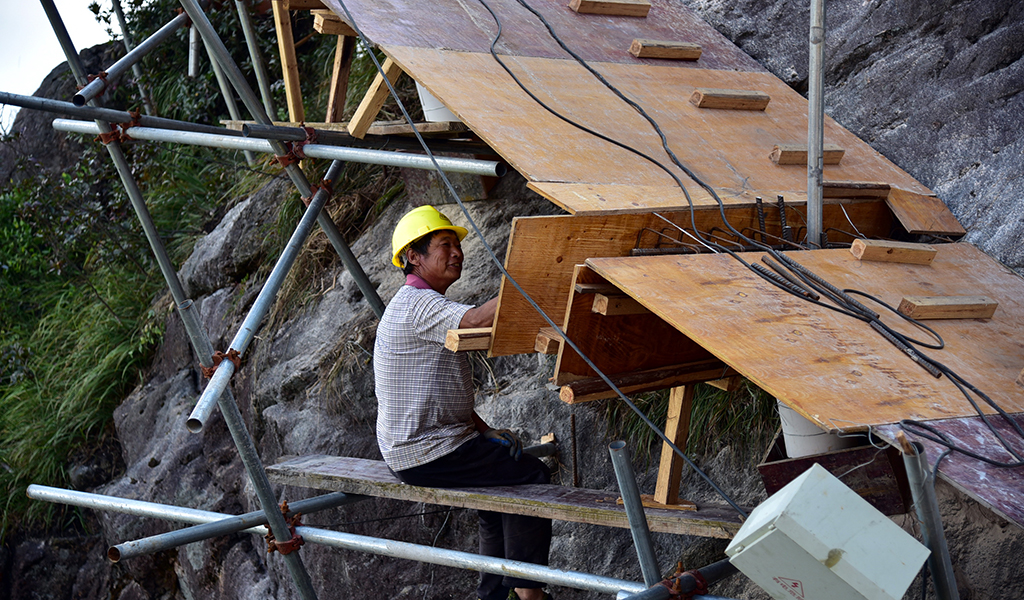Version in 中文 (Chinese)
China urgently needs to tackle its corporate-debt problem before it becomes a major drag on growth in the world’s No. 2 economy. Corporate debt has reached very high levels and continues to grow. In our recent paper, we recommend that the government act promptly to adopt a comprehensive program that would sacrifice some economic growth in the short term while rapidly returning the economy to a sustainable growth path.
Let’s first take a look at the dimensions of the problem. From 2009 to 2015, credit grew very rapidly by 20 percent on average per year, much more than growth in nominal gross domestic product. What’s more, the ratio of non-financial private credit to GDP rose from around 150 percent to more than 200 percent, or about 20-25 percentage points higher than the historical trend. Such a “credit gap” is comparable to those in countries that experienced painful deleveraging, such as Spain, Thailand, and Japan (see Chart 1).
This corporate credit boom reflected the government efforts to stimulate the economy in the wake of the global financial crisis, largely through lending for infrastructure and real estate. The outcome: overbuilding and a severe overhang of unsold properties, especially in lower-tier cities, along with excess capacity in related industries such as steel, cement and coal. The combination of heavy borrowing and falling profits led to excessive debt loads. The problem has been worst among state-owned enterprises that benefit from preferential access to financing and implicit government guarantees, which lower the cost of borrowing.
High-level decision
So what is the solution? First, the government should make a high-level decision to stop financing weak companies, strengthen corporate governance, mitigate social costs and accept likely slower growth in the near term. It needs buy-in at every level—state-owned enterprises, local governments, and financial supervisors. Here are the other steps China’s government can take:
- Triage: Identify companies in financial difficulty and distinguish between those that should be restructured and those "zombie" companies that have no hope of survival and that should be allowed to exit. Because of the existing links between state-owned banks and corporations, a new agency could be created to perform this role.
- Recognize losses: Require banks to recognize and manage impaired assets. So-called shadow banks—trust, securities and asset-management companies—should also be forced to recognize losses.
- Share the burden: Allocate losses among banks, corporates, investors and, if necessary, the government.
- Harden budget constraints—especially on state owned enterprises—by improving corporate governance and removing implicit guarantees to prevent further misallocation of credit and losses.
To make the program work and limit the short-term economic pain, other supportive measures are needed:
- Improve the legal framework for insolvency: But large-scale and expedited restructuring also requires out-of-court mechanisms to complement the existing framework.
- Ease the transition: Broaden unemployment insurance coverage, provide income support for displaced workers and help them find new jobs. The social safety net should be improved because closing or restructuring loss-making companies in industries such as coal and steel could result in substantial layoffs.
- Facilitate market entry: Dismantle monopolies in services such as telecommunications and health care and foster greater competition.
- Improve local government finance: Ensure sufficient taxing powers and revenue sources for local governments to discourage off-balance-sheet borrowing.
Risks appear manageable if the problem is addressed promptly. Indeed, it is encouraging that the government has recognized the problem and is taking action to address it. The comprehensive strategy we have outlined would allow China to reduce leverage, limit vulnerabilities, and return to a strong and sustainable growth path over the medium term.
Read our recently published working paper for more information.





